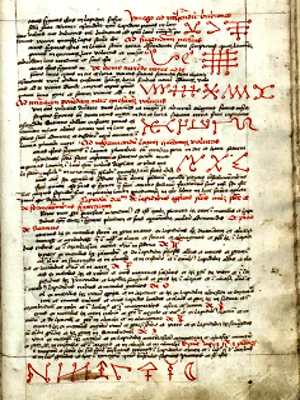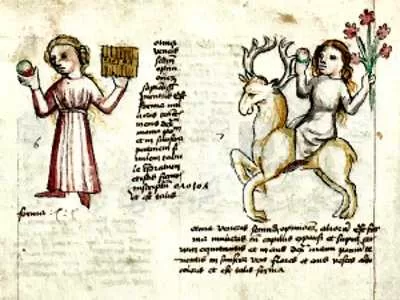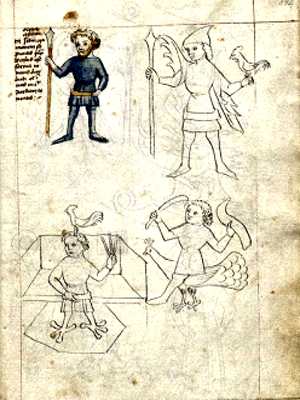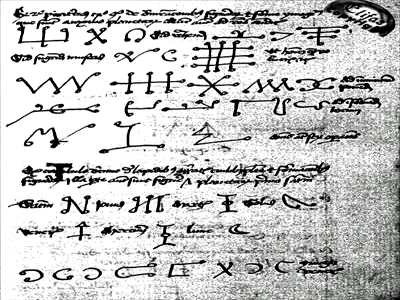The Picatrix stands as one of the most infamous and revered texts in the history of occultism. Known for its complex and often mysterious instructions on astrology, magic, and the nature of the universe, this ancient grimoire is believed to hold the key to vast esoteric knowledge. Written in the 11th century, the Picatrix has intrigued and mystified scholars, occultists, and seekers of hidden wisdom for centuries.
In this article, we’ll uncover the origins of the Picatrix, explore its powerful and often dangerous content, and examine its role in shaping Western magical traditions. We will also take a look at the controversies surrounding this enigmatic work and its relevance in modern esoteric practices.
Origins of the Picatrix
The Picatrix, originally written in Arabic under the title Ghāyat al-Ḥakīm (The Goal of the Wise), is thought to have been compiled in the 11th century by an unknown author. Some scholars attribute it to the Andalusian mystic and scholar Maslama al-Majriti, while others believe it to be the work of multiple writers. The text was translated into Latin in the 12th century, a translation that would later shape the magical practices of Renaissance Europe.
The original Arabic version emerged during the Islamic Golden Age, a period when the Middle East became a hub of knowledge and intellectual exchange, drawing from ancient Greek, Egyptian, Persian, and Indian sources. The Picatrix was a product of this fusion of ideas, blending astrology, alchemy, and talismanic magic with philosophical musings on the nature of the cosmos and humanity’s place within it.

In Europe, the Picatrix quickly gained notoriety for its detailed descriptions of astrological magic and its focus on the manipulation of celestial energies. It was considered a key text by many Renaissance magicians, including Marsilio Ficino and Cornelius Agrippa, who sought to harness the power of the stars and planets for magical purposes.
What’s Inside the Picatrix?
The Picatrix is divided into four books, each covering various aspects of magic, astrology, and the occult sciences. The text is dense, often difficult to interpret, and filled with elaborate rituals and complex astrological charts. It offers instructions on everything from creating talismans to invoking the spirits of the planets. The central belief behind the Picatrix is that the entire universe is interconnected, and that by understanding and manipulating these connections, one can gain control over both the material and spiritual realms.
Book 1: The Nature of the Cosmos and Magic
The first book introduces the reader to the fundamental principles of astrology and magic, explaining how the stars and planets influence the earthly realm. The Picatrix emphasizes the importance of understanding the celestial bodies and their movements, as they are believed to hold the key to influencing events on Earth. This section also outlines the relationship between the microcosm (the individual) and the macrocosm (the universe), a concept that has been central to magical thought for centuries.
Book 2: Talismans and Astrological Magic
The second book delves deeper into the practice of creating talismans, which are objects imbued with magical properties designed to harness the power of the stars. The Picatrix offers detailed instructions on how to make these talismans, often requiring precise astrological timing, specific materials, and complex rituals. These talismans are said to provide protection, enhance personal abilities, and even manipulate the forces of nature.

Book 3: Summoning Spirits and Planetary Influences
The third book focuses on invoking planetary spirits and other supernatural entities. It provides rituals for summoning these beings, often for the purpose of gaining knowledge, power, or favor. The Picatrix also explains how to create astrological charts that can predict future events, influence others, and even control the weather.
Book 4: Advanced Magical Practices and Ethics
The final book presents more advanced magical techniques, including instructions for creating powerful elixirs and performing alchemical transformations. It also touches on the ethical considerations of practicing magic, warning that the misuse of its teachings can lead to dire consequences. The Picatrix suggests that those who seek to master its knowledge must do so with great care and wisdom, as the powers it describes are not to be taken lightly.
Influence on Western Occultism
The Picatrix had a profound influence on the development of Western occultism, particularly during the Renaissance when scholars and magicians eagerly sought out ancient texts that could provide insight into the hidden workings of the universe. Alongside works like the Hermetica and the Emerald Tablet, the Picatrix became a cornerstone of Renaissance magical thought.

One of the key figures influenced by the Picatrix was Marsilio Ficino, an Italian scholar who translated many ancient texts into Latin and helped to revive interest in Hermeticism and Neoplatonism. Ficino and his contemporaries believed that by studying these ancient works, they could tap into a long-lost body of knowledge that would allow them to achieve greater spiritual and intellectual enlightenment.
The Picatrix was also widely read by alchemists, astrologers, and occultists such as Cornelius Agrippa and John Dee. Its teachings on talismanic magic and the invocation of planetary spirits were integrated into their own magical systems, shaping the direction of Western esoteric traditions for centuries to come.
Controversies and Criticisms
Despite its popularity among magicians and occultists, the Picatrix has also been the subject of controversy, largely due to its association with dark magic and potentially dangerous practices. Some of the rituals described in the text involve the use of toxic substances, blood sacrifices, and the invocation of malevolent spirits. These practices have led some scholars and practitioners to view the Picatrix as a dangerous and forbidden text.
In the Middle Ages, the Picatrix was often regarded with suspicion by the Church, which saw its teachings as heretical and a threat to the established religious order. The text’s focus on manipulating the forces of nature and summoning supernatural beings was seen as a form of blasphemy, and many copies of the Picatrix were destroyed or hidden away.
Even today, some occult practitioners approach the Picatrix with caution, recognizing that its teachings carry both great power and great risk. While it offers the promise of mastering the forces of the cosmos, it also warns that the misuse of this power can lead to disaster.
The Picatrix in Modern Occultism
In recent years, the Picatrix has experienced a resurgence of interest among modern occultists and scholars. The text has been retranslated and reinterpreted by contemporary practitioners who seek to unlock its secrets and apply its teachings to modern magical practices.

One of the key areas where the Picatrix continues to have an impact is in astrological magic, which remains a central practice in many esoteric traditions. Modern magicians use the principles outlined in the Picatrix to create talismans, perform rituals, and invoke planetary spirits, much as their Renaissance predecessors did.
Additionally, the Picatrix has been embraced by the New Age movement, where it is often studied alongside other ancient texts like the Kabbalah and the Hermetica. Its teachings on the interconnectedness of the universe and the power of the stars resonate with modern spiritual seekers who are looking for a deeper understanding of the cosmos and their place within it.
Legacy of the Picatrix
The Picatrix remains one of the most intriguing and powerful texts in the history of magic and astrology. Its teachings on talismans, celestial magic, and the manipulation of cosmic forces have shaped Western occultism for centuries and continue to inspire modern practitioners.
While it is often viewed as a dangerous and controversial text, the Picatrix also represents a profound exploration of the mysteries of the universe and the potential for humanity to harness the powers of nature. Whether approached with reverence or caution, the Picatrix offers a unique window into the world of ancient magic and its enduring influence on the occult traditions of today.

